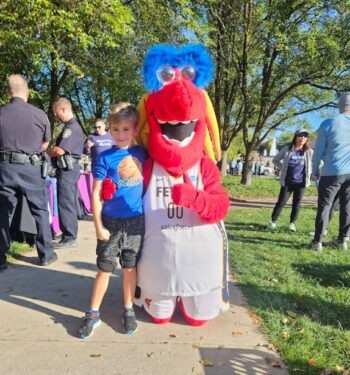October 11, 2019
Our fifth annual Brain Bolt 5K was held on Saturday, October 5, with the run/walk kicking off at the Carmel Gazebo at Civic Square in Carmel.
This year, over 650 race participants and their friends and families enjoyed vendors, live music, and food trucks. Trauma specialists were on hand to educate attendees on preventing head and spine injuries from happening in the first place.
This year’s survivor spokesperson, Lindsey Schuler, was also on hand. In 2016, while training for the World Cheerleading Championship team at a gym in Westfield, Lindsey sustained a fracture to her C-5 vertebrae.
A Goodman Campbell neurosurgeon on-call, Dr. Richard Rodgers, performed surgery on Schuler at Ascension St. Vincent Hospital that same night. At first, she could not move or feel anything from the neck down. Lindsey embarked on a determined course of recovery, and now, three years later, she can walk with the aid of a cane—which she uses mainly for confidence and stability.
Now a junior at Butler University, Lindsey is studying to become a physician assistant with a major in health sciences and a minor in neuroscience. Her physical therapy regimen took her regularly to NeuroHope in Indianapolis, where she has occasionally trained with last year’s survivor spokesperson, Ryan Bardellini.
“I am so grateful for Dr. Rodgers and the nurses, physical therapists, and friends and family that supported me through this journey to regaining my strength,” Lindsey said. “Much like my healthcare providers, I look forward to playing a small role in impacting patients’ lives from injury to recovery.”
Lindsey’s story underscores the impact that we’ve made in improving outcomes for those living with traumatic spine and brain injury—both through our work as on-call surgeons at the Level I trauma center at Ascension St. Vincent, and through the Neurosurgery Foundation at Goodman Campbell.
Brain Bolt also addresses important awareness and education pieces. Making people aware of traumatic spine and brain injury and its challenges helps to build a world where those living with these injuries face fewer misunderstandings. And for those who may sustain injuries in the future, understanding the signs of traumatic SCI and TBI and how to act in those critical moments after injury might save their lives—and improve the quality of life they can expect going forward.



